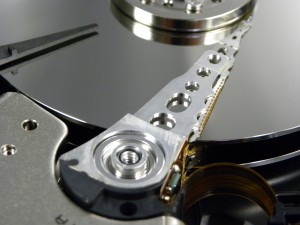Frequently, our clients will ask us about how the data recovery process works — and providing a quick answer can be difficult, because every case presents a different set of challenges.
In some situations, we’re able to restore files by using software. If a hard drive has crashed (failed physically), we might need to replace the read/write heads, motor, or electronics, then make adjustments to the firmware.
trary to popular belief, data recovery engineers will rarely transplant the platters of a hard drive (move the platters to another hard drive enclosure). Here’s why.
Hard drive platters aren’t like CDs, and moving them is a sensitive process.

Platters look a lot like optical discs (such as CDs and DVDs). They’re covered in a thin layer of reflective material, and they spin at high speeds; otherwise, though, they’re an entirely different technology. Hard disk drives (HDDs) store data magnetically, and the spacing between platters is specific to each drive (the spacing in optical discs is standardized).
In short, you can’t simply “plug’ a set of platters into a new enclosure and expect them to work. Platter transplants introduce some significant challenges for professional engineers:
- If a drive has more than one platter, the spacing between the platters will need to be maintained following the transfer. The tolerances are extremely exact, and they vary from drive to drive.
- The tolerances between the read/write heads and platters are also quite precise. For modern hard drives, tolerances are frequently drive-specific.
- Following a transplant, the engineer would need to work extensively with the hard drive’s firmware. While Datarecovery.com maintains special equipment for working with HDD firmware, many laboratories don’t have the necessary tools.
- As with all physical hard drive data recovery methods, platter swaps must be performed in a controlled environment with limited airborne contamination (i.e., a certified cleanroom).
A platter swap may be necessary in severe cases, such as when a spindle motor is completely seized and irreparably damaged. However, platter swaps are a last resort — not the first line of defense.
The risk is high; if the swap is performed outside of a professional data recovery laboratory, the chances of permanent data loss are near 100%.
Trust the leader in hard drive data recovery.
HDD data recovery is rarely a simple process. Engineers need years of experience to attempt something like a platter swap — and as we’ve discussed, they’d much rather use less destructive techniques wherever possible.
However, there’s good news for consumers: Even in cases with severe component damage, data recovery success rates hover around 80-90%. As long as data remains intact, professional engineers can find solutions.
Datarecovery.com, we invest heavily in research and development to provide industry-leading success rates with fast turnaround times. We support our services with risk-free evaluations and our no data, no charge guarantee: If we’re not able to restore the files you need, you don’t pay for the attempt.
To get started, submit a case online or call 1-800-237-4200 to speak with an expert.




